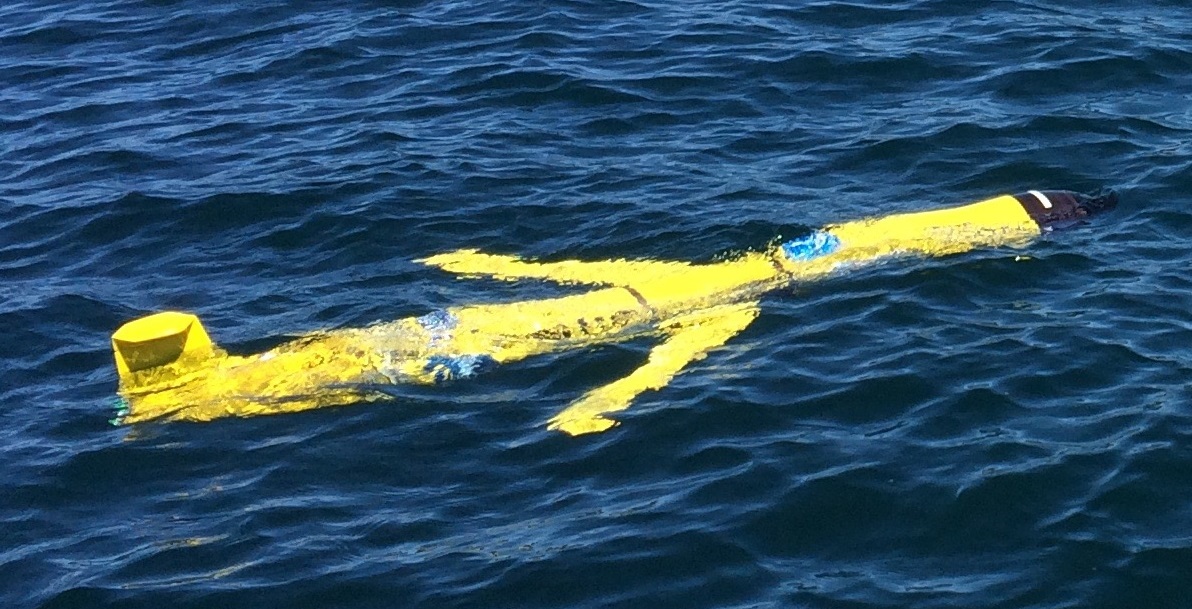
The gliders are autonomous underwater vehicles, which collect data by
diving down into the water column and back to the surface as they travel
through the lake to sets of programmed GPS coordinates. While underway,
the gliders are continuously measuring such parameters as water temperature,
backscatter (a metric for the amount of particles in the water),
chlorophyll, and CDOM (colored dissolved organic matter), among other
things. Because the gliders are moving both horizontally and vertically
through the water, they produce cross-sectional images of the lake for
each of these parameters.
While used extensively in the oceans, there are very few
of these autonomous gliders operating in the Great Lakes, two of which
operate out of Duluth. Maang is the second glider operated by UMD's
Large Lakes Observatory- the first, Gichigami, was
lost in 2018 after a long and successful carreer. Maang is the Ojibwe word for the common loon.
Both UMD gliders have received funding
from the Great Lakes Observing System (GLOS). Nokomis is owned and
operated by the US EPA.
